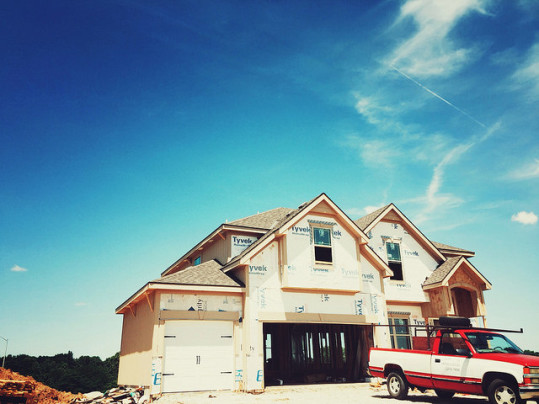Home buyers looking to buy a home this spring have their eye on two things: home prices and mortgage rates. Lately, both have been rising but the latest numbers from the Mortgage Bankers Association’s Weekly Applications Survey offers some potential relief. That’s because the survey – which has been conducted every week since 1990 and covers 75 percent of all retail residential mortgage applications – found average mortgage rates were down last week across all loan categories, including 30-year fixed-rate mortgages with both conforming and jumbo balances, loans backed by the Federal Housing Administration, and 15-year fixed-rate loans. Joel Kan, MBA’s associate vice president of economic and industry forecasting, told CNBC rates fell slightly last week due to concerns about the global economy. “Rates slipped slightly over the week as concerns over U.S. trade policy and global growth sent some investors back to safer U.S. Treasurys,” Kan said. In short, the decline may be a temporary break, as long-term trends remain in place. Still, lower rates, regardless of the reason, are good news for buyers. More here.
Archive for May 2018
The Latest On Where Home Prices Are Headed
Home prices are a top concern for both home buyers and sellers. After all, a lot of the calculus that goes into determining whether or not it’s a good time to sell or buy a house is based on where home values are and where they are expected to be in the future. For that reason, it’s good to follow the S&P Case-Shiller Home Price Indices, as they are considered the leading measure of U.S. home prices. According to the latest data, prices have continued to rise at around the same pace they’ve been increasing, with both month-over-month and year-over-year data showing little change. In short, prices are going up but no faster than they have been. David M. Blitzer, managing director and chairman of the index committee at S&P Dow Jones Indices, says things aren’t expected to change any time soon. “Unless inventories increase faster than sales, or the economy slows significantly, home prices are likely to continue rising,” Blitzer says. But despite rising prices, Blitzer notes that the market is calmer today than it was during the last price boom in the early 2000s. More here.
Why The New Home Market Matters To You
If you aren’t in the market for a new home, why should you care about the new home market? Well, for starters, it plays a very important role in the health of the housing market. And that affects all buyers, not just new home buyers. How? Simply put, new home construction is the quickest way to add homes for sale to the market. And, when more homes are added, buyers can be more choosy, which results in less competition and fewer home price spikes. In other words, when new homes are being built and sold, the overall real estate market benefits, including buyers looking for an existing home in a more affordable price range. So, if that’s true, how’s the new home market doing? According to the latest numbers from the Commerce Department, new home sales were 11.6 percent above last year’s level in April, which is good. But, though year-over-year numbers are positive, recent revisions to totals from the first three months of the year were revised downward, indicating some lingering weakness in the market. More here.
Homes Sell Quickly Even As Inventory Improves
New data from the National Association of Realtors shows the typical for-sale property was on the market for just 26 days in April. And, though sales were down during the month, the speed with which homes are selling is evidence that buyers are interested and active in the market. Lawrence Yun, NAR’s chief economist, says homes are selling at a record pace. “What is available for sale is going under contract at a rapid pace,” Yun said. “Since NAR began tracking this data in May 2011, the median days a listing was on the market was at an all-time low in April, and the share of homes sold in less than a month was at an all-time high.” In fact, 57 percent of homes were sold in less than 30 days in April. Among the reasons homes are selling so quickly this spring is a lower-than-normal number of homes available for sale. Since buyer demand is high and the number of homes available to buy is low, homes are being sold very quickly. However, April’s numbers also show inventory was up 9.8 percent from the month before, which is an encouraging sign for hopeful home buyers. More here.
Economic Data Drives Mortgage Rates Upward
According to the Mortgage Bankers Association’s Weekly Applications Survey, average mortgage rates increased last week across all loan categories. Rates were up for 30-year fixed-rate loans with both conforming and jumbo balances, loans backed by the Federal Housing Administration, and 15-year fixed-rate loans. Joel Kan, an MBA economist, told CNBC higher rates are the result of improved economic data. “Treasury rates increased 10 basis points last week, driven largely by favorable news on retail sales data and industrial production in April, which more than offset data showing still-slow new residential construction,” Kan said. In short, the more the economy improves, the more likely it is that mortgage rates will continue to climb. But though mortgage rates were higher last week, demand for loans to buy homes still edged above last year’s level, with the purchase index 3 percent higher than the same week last year. The refinance, index, on the other hand, fell 4 percent and is now at its lowest level since 2000. The MBA’s weekly survey has been conducted since 1990 and covers 75 percent of all retail residential mortgage applications. More here.
What Is The Most Prosperous City In The US?
Prosperous is defined as “successful in material terms; flourishing financially.” And, while money isn’t everything, it’s safe to say we all want to be successful and wouldn’t mind flourishing financially. So where in the country is the best place to live if you want some prosperity? Well, the answer might surprise you. That’s because a new study – looking at factors such as population, median income, home values, share of inhabitants holding higher education degrees, poverty rate, and unemployment – determined that Odessa, Texas was the the top city for prosperity, beating out heavy hitters like Washington DC, New York, Los Angeles, Atlanta, and Charleston. So what about Odessa makes it the most prosperous city in America? Well, from 2000 to 2016, the city experienced a 38 percent spike in income growth, home values rose 91 percent, and the poverty rate dropped by 36 percent. Those are some impressive numbers but the story behind the story is that Odessa benefited from a surge in crude oil production, which boosted the city’s fortunes and lifted it to the top spot on the list. More here.
Housing Outlook Sees Gradual Gains Ahead
The housing market has been in a bit of a holding pattern lately. While there is a high level of home buyer demand, there are a lower-than-normal number of homes for sale. That means, though sales should be booming right now, they are only making modest gains. But things can change. And, if more houses become available for sale, it could begin to reverse home price trends, making it easier for interested buyers to find and buy homes. So what is likely to happen in the coming months? Well, according to Fannie Mae’s most recent Economic and Housing Outlook, things will grind forward, but we shouldn’t expect major changes in market fundamentals anytime soon. “Housing’s upward grind should continue, despite a lackluster first quarter,” Fannie Mae’s chief economist, Doug Duncan, says. “We expect home sales to post modest gains both this year and next, as prices rise and affordability declines amid low for-sale inventory.” For buyers and sellers who may be waiting for conditions to change before making a move, this means the market isn’t likely to be significantly different in the coming months. More here.







